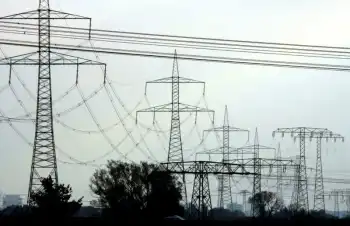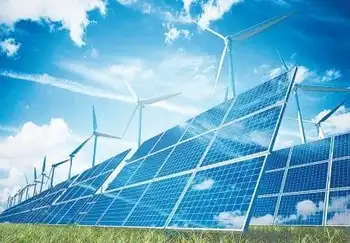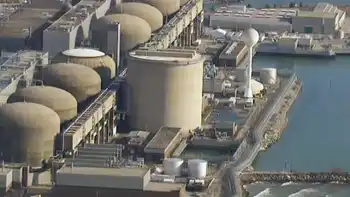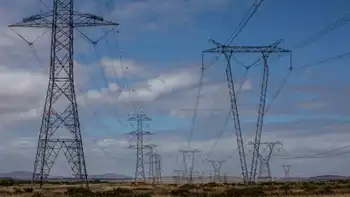Trillions needed to cut emissions: IEA
By International Herald Tribune
Electrical Testing & Commissioning of Power Systems
Our customized live online or in‑person group training can be delivered to your staff at your location.

- Live Online
- 12 hours Instructor-led
- Group Training Available
The executive director of the agency, Nobuo Tanaka, called for "immediate policy action and technological transition on an unprecedented scale." Tanaka said the world needed to "completely transform the way we produce and use energy."
The IEA report said that the combination of growing demand for energy, especially in countries like China and India, the dangers of climate change and the scarcity of resources was going to require huge shifts in the way the global economy was organized. To meet those challenges, it said, nations would have to overcome objections to building nuclear power plants and storing large amounts of carbon dioxide underground or beneath the ocean floor.
"I am very pleased the International Energy Agency has put such a high figure on the cost of making this transition," said Pierre Noël, an energy expert and senior policy fellow at the European Council on Foreign Relations. "It is high time we got rid of the myth that we can decarbonize our economies on the cheap," he said.
In its report, the IEA, which gives advice on energy policy to its 27 member nations, which include the United States, Canada, Japan, Australia, New Zealand, South Korea and most of Europe, described emissions-cutting measures that broadly match the advice of some leading scientists, who have recommended cutting emissions in half by 2050 as a way of avoiding devastating climate change. Environment ministers from the Group of 8 have backed this target, and they have said governments should officially endorse the goal at a G-8 summit meeting in July in Japan.
The report did not say how such large sums of money should be raised. The IEA said member nations of the UN Framework Convention on Climate Change, or UNFCCC, the parent treaty of the Kyoto Protocol, must negotiate ways of encouraging governments and businesses to lower emissions.
John Hay, a spokesman for the convention, said markets operating under the Kyoto treaty that put a price on carbon pollution, like Europe's Emissions Trading System, were already playing an important role in driving investment, but could not be solely relied on to raise the sums described by the IEA. Two years ago, Yvo de Boer, the executive secretary of the Unfccc, estimated that carbon trading could generate investments in climate-friendly technology in the developing world worth about $100 billion annually - a fraction of the amounts the IEA said was required.
The IEA report foresees "a dramatic transformation of the energy industry, and how that level of investment can be achieved is a major question," said Robert LaCount, head of climate change and clean energy research at Cambridge Energy Research Associates. "Governments at all levels will need to help and support the emergence of new technologies so that they can reach commercialization," he said.
Among the energy agency's chief messages is that current energy policies are unsustainable, with emissions of carbon dioxide expected to climb 130 percent and demand for oil to rise by 70 percent by 2050. Tanaka warned that oil demand could be five times the current production of Saudi Arabia by that time, and that carbon emissions of such a magnitude could raise global average temperatures by 6 degrees Celsius (10.8 degrees Fahrenheit), changing all aspects of life and creating irreversible changes in the natural environment.
A major problem for the planet is that the rising cost of oil and natural gas is prompting a switch to coal, particularly in India and China. Coal is inexpensive and plentiful but highly polluting, and its increasing use is contributing to the accelerating growth in emissions of carbon dioxide. But Noël, of the foreign relations council, said the rising cost of fossil fuels should be a cause for optimism, because they would be the main factor driving large-scale investments.
"It's not primarily a global agreement between heads of state that will make technologies like nuclear power or like carbon capture reach take off," Noël said. "It's primarily expectations about energy prices," he said.
The IEA recommended taking measures now that would ensure that carbon emissions were down to at least present-day levels by mid-century by using technologies that already exist, including steps for improving energy efficiency and reducing emissions from power generation. Such measures would cost $17 trillion between now and 2050, or 0.4 percent of global output, costing about $400 billion a year.
The agency also mapped out a second, more ambitious plan aimed at reducing emissions to half their current levels by mid-century by emphasizing technologies and strategies for "weaning the world off oil." The agency estimated the cost of that process at $45 trillion, or 1.1 percent of annual global output, over the period to 2050. Investments of $100 billion to $200 billion would be needed each year over the next 10 years, rising to $1 trillion to $2 trillion each year in the coming decades.
To reach the goal of halving emissions, the agency said, among the most important measures would be equipping more than 50 natural gas and coal power plants each year with equipment to capture and sequester carbon dioxide. Such measures would double the generating costs of a coal power station not equipped with capture and storage, and many plants that could not be converted to the new technology would have to close before the end of their useful lives.
"It is recognized that this will be a large step for countries heavily reliant on coal, but a necessary step requiring careful management," the report said.
There would also be a need for 32 new nuclear plants each year, while the number of wind turbines would need to increase by 17,500 annually. Other strategies included accelerating the development of solar electricity and so-called second-generation biofuels, made from sources that do not compete with food for farmland.
The report acknowledged that numerous objections to these technologies would need to be overcome, in particular local opposition to building new nuclear power stations and to long-term nuclear waste repositories. Geologically stable sites also would need to be found for storing carbon dioxide.
But the most difficult and costly step, it said, would be reducing carbon emissions from transportation at a time when the use of cars, airplanes and ships would still be growing rapidly but few technologies would exist to limit emissions from those sources.











